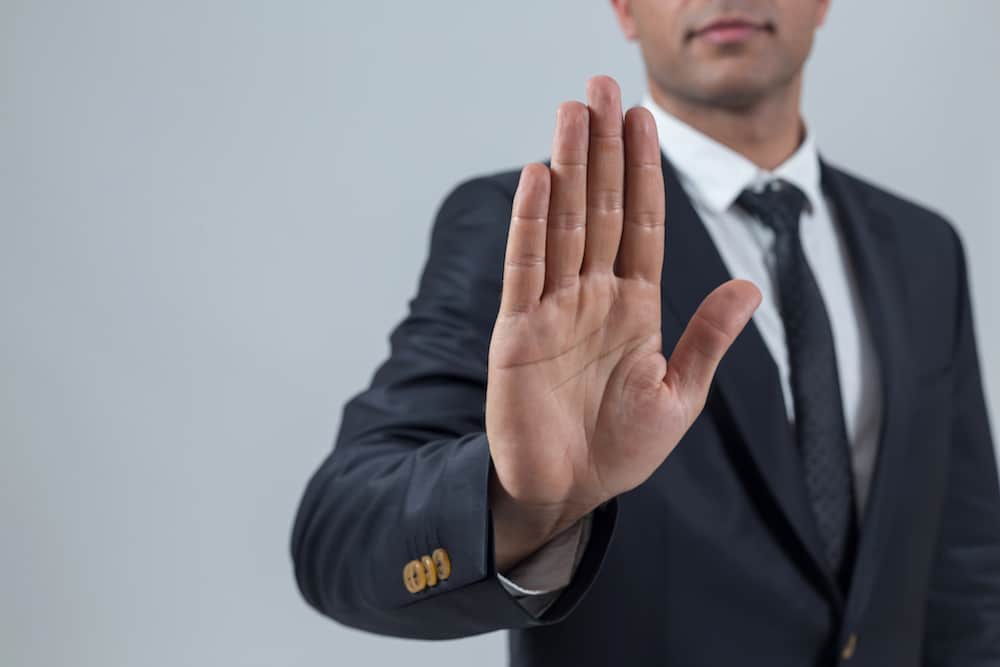Finding the Positive in the Negative
I have a hard time saying no. Perhaps you do too. This problem is more common than we think, especially for those who are empathetic or nurturing. We just hate the thought of hurting someone else’s feelings.
It was a long time before I noticed this problem in myself. For most of my career, I’ve had administrative assistants who said no for me. If someone had a request, they had to get through an assistant first.
This gave me the buffer I needed to consider the request more carefully. When I declined the request, I nearly always let my assistant do it for me. The fact that I didn’t have to deliver the bad news myself kept me focused and productive, and it helped preserve relationships.
But here’s the thing. I didn't realize what a gift that was. When I left the corporate world, I figured I could get along fine without an assistant. That meant the requests all came straight to me. And, left to my own devices, I said yes far, far too often.
A third of the time I wanted to kick myself as soon as I did. Another third of the time I wanted to kick myself shortly afterward. How did I get myself into this mess?
“Saying No has always been important,” says William Ury in his book, The Power of a Positive No, “but perhaps never as essential a skill as it is today.” The reasons he lists are the ones I experienced. All my yeses meant I was overcommitted, shortchanging my relationships, and unable to do my best work.
I bet you can relate.
The Reason We Struggle
Why do we have such a hard time saying no? Ury says it's because we want to protect our relationships, and that's definitely a big part of it. But we even say yes to perfect strangers. I think it has to do with keeping up appearances. We want to appear helpful or can-do. But it’s a trap.
When we say yes too often, we tend to hurt our relationships. Not only that, but our performance suffers, so it's impossible to keep up appearances. We let everyone down, especially ourselves.
After a while of fielding all my own requests, I decided I needed an administrative assistant again. But before I hired an admin, I started turning my no boat around on my own. How?
I resolved to say no to everything unless there was a compelling reason to say yes. I switched my default response from an affirmative to a negative. Things changed with just that determination, but I was able go even further when I wrote down five reasons for saying no.
Say No for a Better Yes
This list is the why behind the what. It turns out there are very good reasons for flexing your no muscle. If you struggle with this, I think these five reasons might help you as well.
Here’s what I wrote.
If I don’t say no,
- Other peoples’ priorities will take precedence over ours.
- Mere acquaintances—people we barely know!—will crowd out time with family and close friends.
- We will not have the time we need for rest and recovery.
- We will end up frustrated and stressed.
- We won't be able to say yes to the really important things.
This last one was the clincher for me.
Here’s what Patti Breitman and Connie Hatch say in their book, How to Say No Without Feeling Guilty:
Out of guilt or fear of confrontation, we take on more projects, invest in someone else’s priorities . . . In the process, we dissipate our most valuable personal resources—time, energy, and money—on things that aren't important to us. Each time we agree to something without enthusiasm for interest, we waste a little more of these precious resources.
Now let’s turn that around. Every time we say no to something that is not important, we are saying yes to something that is: our work, our relationships, our resources, our margin. How often are you saying no?
Disclosure of Material Connection: Some of the links in the post above are “affiliate links.” This means if you click on the link and purchase the item, we will receive an affiliate commission. Regardless, we only recommend products or services we use and believe will add value to our readers. We are disclosing this in accordance with the Federal Trade Commission’s 16 CFR, Part 255: “Guides Concerning the Use of Endorsements and Testimonials in Advertising.









